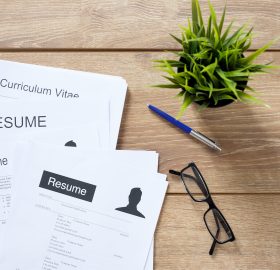Five Tips to Thrive in Your First Canadian Winter
Your first Canadian winter can be a shock, with the fluctuating temperatures, cold winds, and falling snow. Canada gets cold and dry in the winter months; not -5°C cold, but -30°C cold. So, how do you prepare for that and ensure you make the most of the season?
Go in prepared with these five tips for thriving in the Canadian winters.
Warm Outerwear
Not all cold-weather gear is created equal. Whether you will be trekking through the backcountry, or taking on snow-covered city streets, winter can be brutal. That is why your winter coat, whatever the style, whatever the purpose, has to keep you warm. Look for a jacket that is water-resistant at a minimum, ideally waterproof, and rated for temperatures as low as -20°C. Longer cuts help to keep your backside warm when you are moving about and can keep the crisp winds from making their way in.
You will also want to find yourself a pair of waterproof, fleece-lined winter gloves, a fleece-lined toque and a thick scarf to help keep the cold off of your skin.
Proper Footwear
Although snow can be beautiful to look at, it can also be wet, slippery and icy. It is very common for people to slip on ice while walking, especially without appropriate footwear, so make sure you invest in a good pair of boots. You should look for insulated, waterproof boots with higher tops and a sole that has enough tread to prevent slips and falls.
Stay Hydrated
Drinking plenty of water not only helps you stay hydrated, it also helps regulate body temperature and is essential to the function of cells, tissues and organs. Drinking warm liquids such as tea, cider, hot chocolate or coffee will help to keep you warm on chilly days. Drinking water and teas can also give your immune system a boost to keep those unwanted illnesses at bay.
Vitamin D Supplementation
In Canada, limited sun exposure means your body can’t produce vitamin D from November through April. For newcomers transitioning from a warmer, sunny climate, this is a major transition for your body to handle. Vitamin D regulates or influences over 200 genes in your body, playing an important role in overall health. Keep your body happy and the “bugs” away by supplementing with Vitamin D3 this winter season.
Moisturize
The cold winds of the Canadian winter sap your skin of its natural moisture which can cause your skin to dry and crack, or your lips to become chapped. In some cases, it can be painful but is easily avoidable with lip chap and skin creams.
Winter Tires
If you plan to drive, it’s very important to be aware of the weather conditions and have your car prepared for them. In the thick of winter, Canadian roads can be icy and flurries can lead to poor visibility. Winter tires can help to give you better traction on the roads during this weather while slowing down and being aware of your surroundings can help you reach your destination safely.
These are a few tips to get you started off on the right foot, but you can continue to make this an amazing winter by further educating yourself on the things to be aware of with the cold weather and getting outside to enjoy the beauty and fun of the colder season.
10 Tips to Help You Get Settled in Canada
There is an excitement and nervousness that you feel when you first arrive in your new Country. You have arrived in Canada, and now you have so many questions. Where do you begin when it comes to getting settled?
Here are 10 tips which can get you headed in the right direction:
- Find your first home in Canada. Whether you decide to rent or purchase, having your first home will be a major accomplishment in your Canadian journey. Check out these top considerations when looking for a place to call your own.
- Shop for appropriate clothing. If you came from a tropical country, you will need proper winter clothing that will stand-up in colder temperatures. Items such as a winter jacket, winter pants, and winter boots – pick ones that are water proof and have good grip. You will also need gloves, scarves, warm socks and toques. Keep yourself warm and dry during the winter months.
- Open a Canadian bank account. Anyone can open a bank account in Canada if they meet the identification requirements set out in the Bank Act. A bank account lets you write cheques, use automated banking machines (ABMs), get paid through direct deposit, and use a debit or credit card for purchases. You can open an account even if you don’t have a job yet or money to deposit, or if you’ve been bankrupt.
- Apply for your Social Insurance Number (SIN) and Healthcare Card. This very important, and you should do it in your first week if possible. Learn how to apply for your SIN card and healthcare card.
- Find a Family Physician. Family doctors treat a wide range of conditions, and are often your primary care providers. In the long term, that means you will want to build a lasting relationship with a family physician. Developing such a relationship allows them to know your medical history inside and out, helping them make accurate diagnoses, watch for red flags regarding medications and monitor changes in your health through the years.
- Find a specialist or consultant for Newcomer’s to Canada. Building a relationship with an immigration specialist will provide you with a resource who can provide information and direction throughout your Canadian journey. They will give you advice, provide information and resources, as well as suggest next steps.
- Strengthen your English with free courses. If you’re a permanent resident or a protected person, you can take language classes at no cost to you. English is a confusing language with lots of words and phrases that are more common in speech than writing, and are typically restricted to a particular context. Practice will strengthen your English abilities and help you get better at identifying appropriate context. Learn more about these classes.
- Get educational equivalency. Being new to Canada it’s really hard to get your dream job right away. Submiting your Educational transcript for equivalency may be a stepping stone to get you there faster. After you receive your equivalency, take it to any college or university and show your IQAS result. The educational institute will decide what additional courses you need based on this information. The advantage of sending your educational documents to IQAS is you may not have to upgrade any additional English or Math, allowing you to start taking other courses right away.
- Make new friends or contacts. Join local sports groups, find a volunteer job, reach out to your new neighbours, or attends short courses. Meeting new people will help you get settled in your new life and can prove beneficial in a variety of areas from personal to professional.
- Find a job. Looking for a job in Canada is like a diving into a “deep blue sea”. Remember you are in a new country and accepting any job will help you overcome challenges that may come up during your settlement period. Stay motivated to reach your goals and you will be successful.
These stepping stones can give a starting point for settled in Canada and help you along the path to living your Canadian dream.
Dress to Impress and Ace That Interview
You receive an email that you have a job interview, but you don’t know what to wear? These tips will help you go in looking professional and polished.
Stay away from Scents
Many companies have scents free policies; this is because some people have allergies or reactions to certain odours.
Dress in comfortable, professional clothing
There is a common saying “dress for the job that you want, not the job you have”. This means if you are interviewing for an office position, you should dress in business wear, while if you are applying for a labour position, then clean casual clothing may be appropriate. It is important that you look presentable and comfortable because this way you can present yourself properly and are likely to be more successful.
Get ready the night before your interview
- Try on everything that you want to wear one day before your interview. This will keep you from scrambling the day of the interview to find items that fit nicely and will ensure you have the perfect outfit ready to go.
- Polish your shoes.
- Get a haircut.
- Once you have picked out your outfit, press your clothes for a crisp, clean appearance.
Hopefully, these tips help you feel confident and prepared for your interview. Good Luck!
How to Prepare for Your Next Job Interview
We have all experienced the nervousness that comes when you are going into a job interview. To help with your nerves, you probably would like to be more prepared than the other candidates. Here are seven tips to help you prepare for your next interview:
- Learn all about the company you are applying for. This will help you to stand out in your responses to the recruiter’s questions compared to less-prepared candidates. Research the company website, learn the company history, the position you are applying for and learn about your interviewer. It is also a good idea to go into your interview with some thoughtful questions of your own that you have formed from researching the company.
- Know your strengths and weaknesses. It’s important to emphasize what you’re good at, and minimize, but be truthful about, what you’re not. Double-check your skills and qualifications and compare it to the job requirement. This will help you identify which strengths you would like to highlight in your interview.
- Plan what to wear. A study found that 64% of bosses said clothes could be the deciding factor between two similar candidates. Dress appropriately to your interview and give yourself a competitive edge.
- Arrive Prepared. You should bring any items you may need during your interview with you in a professional bag, briefcase or folder. Some items you should have include copies of your resume, a pen or two, a notepad, your prepared questions, a list of references, contact information, and breath mints or gum (although you should spit this out before actually entering your interview.
- Pay attention to your non-verbal communication. Your body language says a lot, even when you’re not talking. It is important to be aware of this while you are in your interview and avoid gestures that give the wrong message. Start the interview with a firm handshake, make eye contact throughout the interview, sit up straight, and don’t sit with crossed across your chest as this can make you seem defensive and guarded.
- Follow-up after your interview. Send the interviewer a personalized thank you letter or email a couple of hours after your interview. The follow-up should express your interest in the position and include specific notes from the interview. This will keep you top of mind for the interviewer as well as show you appreciate the time and effort they put into considering you as a candidate.
By integrating these simple tips into your interview preparation you can ensure you stand out against the competition. Good luck with your interview!
Kicking-Off Your Resume: Three Common Types
It’s time to kick-off your Canadian job search and you need to update your resume for success. There are several basic resume types you can use to apply for job openings; a chronological, functional or hybrid. Each type has its own benefits, so how do you decide which is best? Here we will explain each type to help you make this decision and get started on your resume writing process.
Chronological Resume
This format is based on your professional timeline and is organized by the positions you have held listed from the most recent position to the oldest. Under each position listed, you would include the duties you performed as well as any major accomplishments that occurred while you were in each position. A chronological resume is great for someone who has had a career in a single field and is looking to get a position in the same field.
Functional Resume
This format is skill-based. It is organized by skills that you gained in your previous work relevant to the position you are currently applying for. Functional is best if you recently graduated, have any major time gaps in employment, or are changing careers.
Hybrid (Combination) Resume
This format is a combination of chronological and functional. The chronological is maintained, but this format highlights skills and accomplishments just as much as it highlights professional experience.
Now, with the knowledge you have gained you are ready to choose the best resume type for the job opening and your experience, skills, and achievements!




